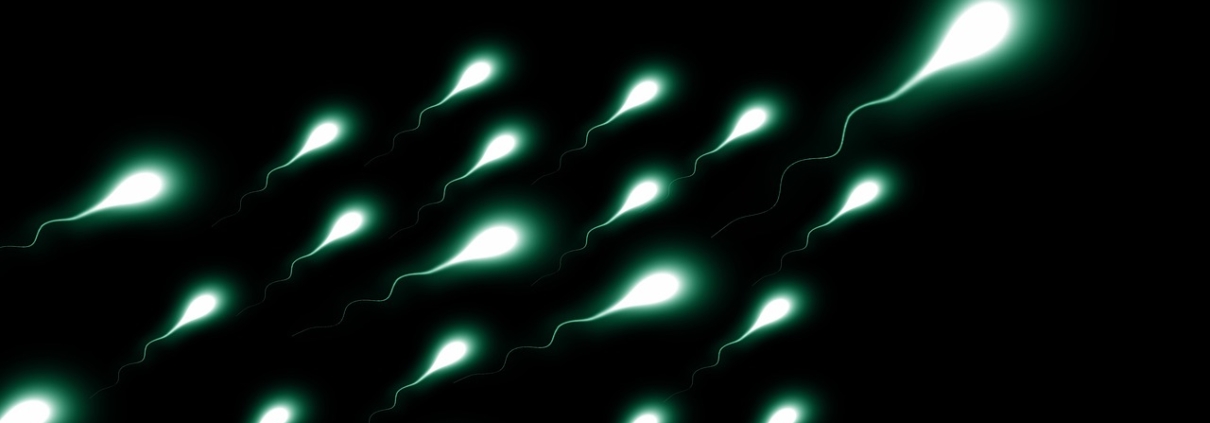If you’re having trouble conceiving, there are a number of ways to detect if sperm went inside. Read on to learn more about detecting sperm in the fallopian tubes, uterus, and vagina. There are also several methods for detecting whether sperm went inside the egg.
Detecting sperm in the vagina
The first sperm to enter a woman’s reproductive tract is usually not fertilized. However, motile sperm can survive in the female reproductive system for up to five days. Several factors can influence their transport, including whether they possess the ability to penetrate the egg’s cell membrane.
Two methods have been established for detecting sperm in vaginal secretions. These include RSID (rapid swab indicator) and the ABAcard. The RSID is a quick and painless test, and the ABAcard is simple and cheap.
The RSID method was able to detect a higher proportion of sperm than the ABAcard did. Both tests detected semen, but RSID detected a higher percentage of PSA positive specimens than the ABAcard. The RSID method detected semen in all specimens with a high PSA level.
In order to accurately study immune responses of the cervicovaginal, semen must be detected in vaginal secretions. In the study presented here, two semen markers were detected in parallel in the CVS: prostatic-specific antigen (PSA) and Y-chromosome DNA. The former is detected by immunoenzymatic capture assay in the cell-free fraction of CVS. The latter was detected by a single PCR of DNA extracted by silica from the cell fraction.
Another method to detect semen is the acid phosphatase detection method. This is a fast and simple way to test for the presence of semen in the vagina. However, it should not be used to measure SLPI or proinflammatory cytokines, since semen is not affected by these factors.
Detecting sperm in the fallopian tube
Sperm travel from the epididymis through the vas deferens into the pelvis, where they join with the ejaculatory duct from the seminal vesicles to form semen. Semen then travels through the fallopian tubes and the uterus.
When the ovary releases an egg, the sperm must be viable in order to fertilize it. After a successful encounter with a sperm cell in the fallopian tube, the fertilized egg begins its rapid descent to the uterus, where it will develop into a baby. If the fallopian tube is damaged, the process of fertilization may be impaired, causing tubal pregnancy.
It is important to have a healthy ovary and uterus in order to get pregnant. Fallopian tubes must be open and free of blockages to allow sperm and egg to reach each other. Blocked fallopian tubes can prevent fertilization and increase the risks of tubal pregnancy and ectopic pregnancy. Depending on the extent of the blockage, doctors may perform a hysterosalpingogram to detect blocked fallopian tubes.
During a HSG, sperm are detected in the fallopian tubes. The results can show if there is a blockage in the tube, or if the fallopian tube is infected or scarred. Semen analysis can also reveal if the sperm have the ability to reach the egg. The test will also tell whether a fertilized egg can implant in the uterus.
Another way to detect sperm is to use ultrasound. Ultrasound can detect abnormalities in the fallopian tubes, but it is not a foolproof method for detecting blocked fallopian tubes. A hysterosalpingogram will give you a better idea of the condition of your fallopian tubes than an ultrasound.
Detecting sperm in the uterus
Detecting sperm in the womb is one of the most important steps of the reproductive process. Sperm are naturally occurring in the female reproductive tract, where they play a role in the creation of a fertilized egg. Their interaction with the female reproductive system, through the seminal fluid, generates maternal immune tolerance and reproductive success.
In the laboratory, sperm are detected in the womb by staining them with hematoxylin-eosin. The sperm that are able to secrete seminal vesicles are able to remain intact in the uterus. Sperm that do not produce any SVS2 are prone to breaking down in the acrosome.
Ly6G+ neutrophils are also present in the endometrium of vasectomized or intact-mated females. Neutrophils, which are present in the epithelium of the uterus, secrete extracellular traps, which kill bacteria and microorganisms and selectively sequester a large proportion of sperm. This allows a smaller subset of sperm to remain viable and fertilize the egg.
The findings of this study also show that there is a competitive balance between survival and death within the uterus. This balance may contribute to the selective selection of sperm in the womb. Detecting sperm in the womb may be one of the next steps in ensuring a healthy pregnancy.
Sperm are able to survive in the female reproductive system for a minimum of 12 hours after ovulation. However, this initial contact is unlikely to lead to fertilization. In some cases, motile sperm survive in the female reproductive tract for up to five days.
Detecting sperm in the egg
Detecting sperm in the egg is important for many reasons. First of all, sperm contain genetic material, which is essential for conception. Sperm then swims through a woman’s reproductive system, deposited toward the back of the vagina (the opening to the womb). The fluids that are present inside the vagina also allow for sperm to deposit near the cervix. Sperm also contain proteins, vitamins, and minerals to fuel their journey. A sperm analysis analyzes the sperm under a microscope to determine their count, activity, and shape.
Sperm’s shape determines their ability to penetrate the egg, which is essential for fertilization. Normal sperm contain between fifteen and twenty million sperm per milliliter of semen. Sperm with a reduced sperm count and a reduced motility are called azoospermia and oligospermia.
DNA damage can occur to sperm during the development of the egg and can be detected with the use of different methods. Laser tests are common in labs, and one type of laser test involves placing stained sperm cells in a laser beam. When the laser hits the cells, the dye will emit a fluorescent signal. If the DNA is not damaged, the sample will appear green. If the sperm DNA is damaged, a red or yellow color will show up.
Another way to detect sperm in the egg is by analyzing sperm’s sialic acid content. The sialic acid in sperm allows it to interact with neutrophils. This interaction may help sperm survive during pre-fertilization events, which include the leukocytic response. The leukocytes will then move to the uterus and kill sperm.
A more precise test is necessary to determine if sperm is able to penetrate the egg. A simple non-invasive genetic test for identifying sperm in the egg could help identify women who are genetically affected by the disease and determine the best treatment. If this test can be successful, the fertility clinics can begin treating affected women accordingly.
Sperm are small in size, measuring just a few millimeters. A single sperm contains about thirty percent of the weight of an egg. It also contains mitochondria, which provide energy for the sperm’s tail, also called a flagellum. The mitochondria help sperm to swim about 8 inches per hour.



